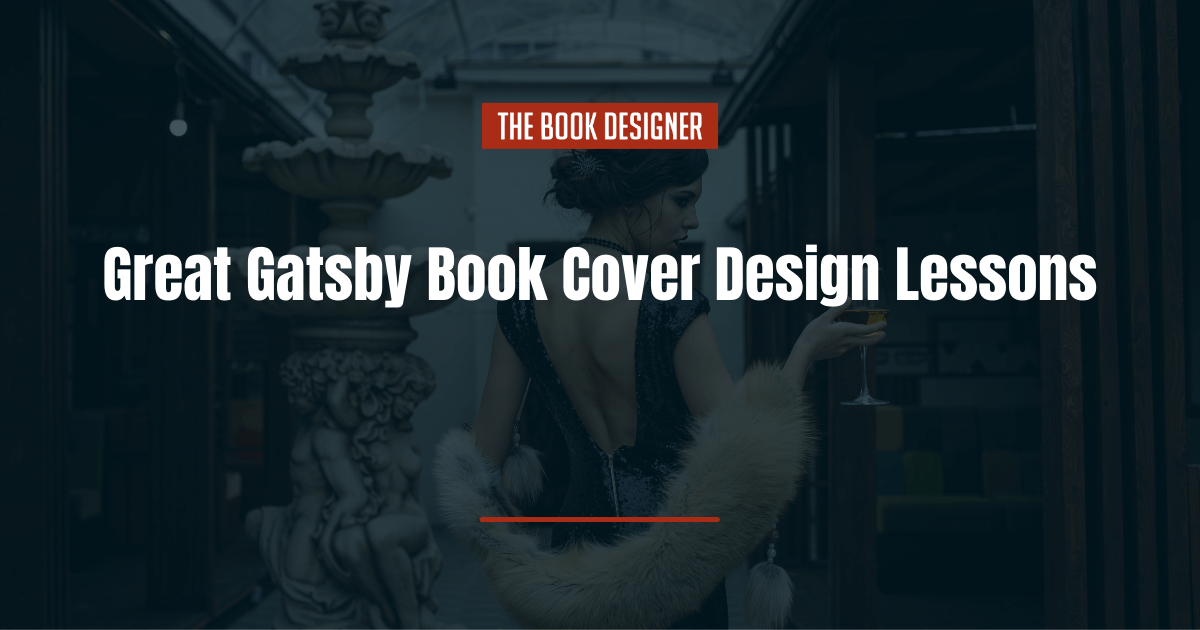The Great Gatsby is one of the most well-known books of all time. Due to it being in print for so long, it has come out with a wide variety of covers and designs through the years. Although the blue cover with the eyes (which we will talk about) is one of the most famous covers when it comes to this book, there are a few others out there to take lessons from as well.
Let’s go over some of The Great Gatsby book cover design lessons that authors can use as inspiration to design their own books. Afterall, the cover you choose for your book is an incredibly important part of putting it together and using as a tool to grab attention of readers.
In discussing The Great Gatsby‘s book cover, we’ll go over:
Brainstorming A Book Cover
The first thing you will want to think about when it comes to designing your book cover is if there are any main themes about your book you want to portray. You don’t want to spoil the twist or ending of your book on the cover, but you might want to hint at what the book is about so you can use it as inspiration.
You might want to look at some other book covers in your own genre to get some ideas of what to include or how to design your cover. If you are not sure what is popular out there, you can search a book genre on a site such as Amazon and sort by the most books sold recently to get an idea of what is already out there and doing well. You might even be able to draw inspiration from something like movie posters to see how you could put all the elements together.
It is a good idea to keep a general log of covers you like so you can refer back to them as inspiration when you start to design your own.
Learn From The Classics
While this article will be diving into The Great Gatsby and some of its various covers out there, there is a lot you can learn from other classics. It is one of the best places for you to study some book covers and get inspiration.
The Great Gatsby Book Cover Design Lessons
Looking to books that were famous throughout time can help give you inspiration for your book covers. Usually, famous books have whole teams of people who come together to help design them, but that does not mean you need to be discouraged from putting extra effort into your own book covers.
Let’s take a look at a variety of covers that have graced the cover of The Great Gatsby and talk about some basics you can learn from each one.
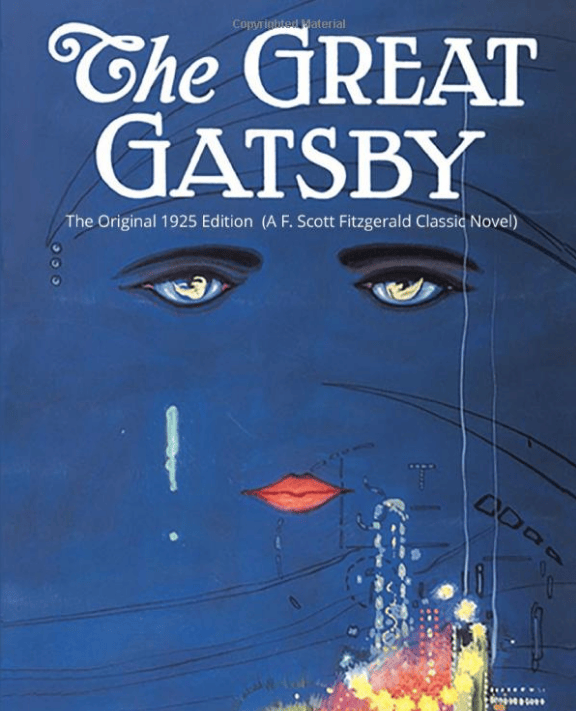
1. Using Symbolism: The 1925 Edition
As you have most likely seen on one of the most famous covers of The Great Gatsby, there are bright eyes with a single tear looking over an illuminated New York City. This art piece, called ‘Celestial Eyes’ was commissioned for the 1925 edition of The Great Gatsby. It is still to this day one of the more well-known and popular covers for this book, and you can still buy it to this day.
The eyes symbolize the idea that everything is being watched; also sometimes said to represent God’s eyes. The eyes are referred to throughout the text as a symbol, which can be left to artistic interpretation. Most people do not also catch that there are two women in the eyes, which plays into the general storyline of the whole book and what happens in the plot.
It could also represent the idea that nothing can be hidden and everything is eventually brought to the light, which is also a common theme and idea throughout the book.
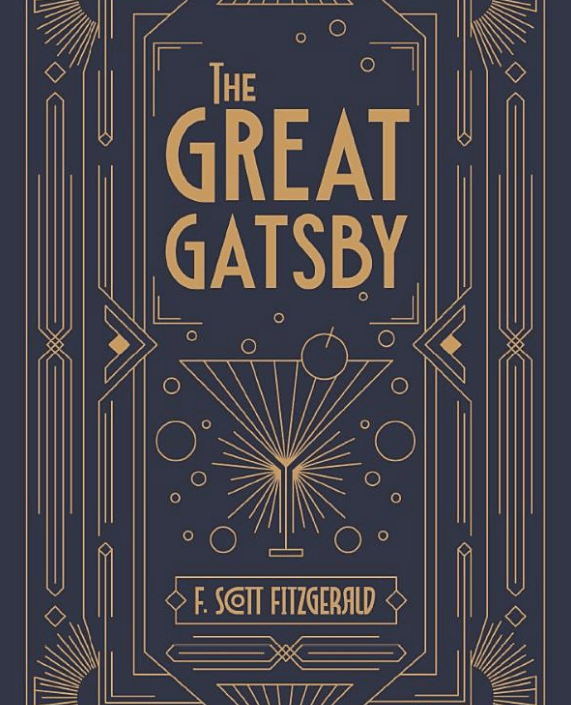
2. Drawing Inspiration From The Era
It is no secret that The Great Gatsby has some iconic imagery and an aesthetic that most people can mentally visualize. People even throw Gatsby-themed parties and weddings because it is so well-known and even people who have not read the book can imagine the style in their mind.
The cover above draws on the iconic art style and imagery from the book. Everything from the text to the art style to the colors comes from that era and is designed in a way to remind you of that kind of look most of us remember.
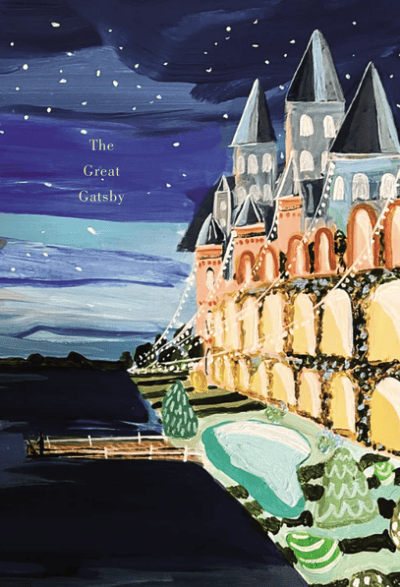
3. Use Art: The Laci Fowler Cover
Yes, the original 1925 cover is also from an art piece, however, many famous books will release various collector’s editions with unique covers that can help sell more copies. While this angle is not always possible for authors, you might want to think about releasing a special run of your books with a limited edition cover that your readers cannot find anywhere else.
This can especially be a good idea if you are releasing a new or updated version, or a new copy after your book has been in print for a variety of years.
This cover above is designed by Laci Fowler.
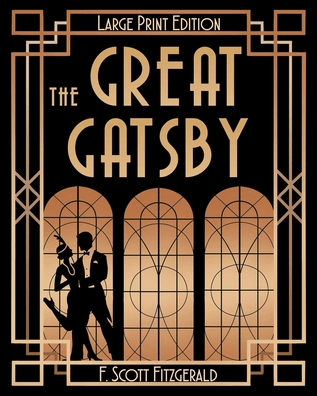
4. Different Covers For Different Editions
This unique cover is for the large print edition. You might want to consider unique covers for each of the book editions you create as a way to help them stand out.
This cover once again draws on the art style of the time and some of the elements from the story. You might not be able to release multiple versions of your book at the same time, but it can be something to keep in mind should the opportunity arise in the future.
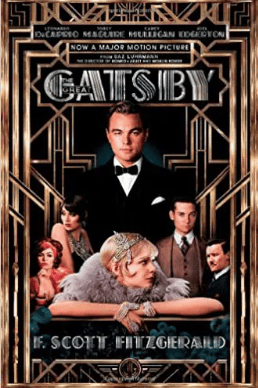
5. Media Representation
While not every book out there will be made into a show or movie, the point of this cover is to also show that you can use some kind of social proof on the cover of your book.
Most people are aware the The Great Gatsby has made made into multiple movies and influenced multiple other forms of media, so having a cover with the famous movie poster only makes sense.
It can grab a lot of attention on shelves to see Tobey Maguire, Carey Mulligan, and Leonardo DiCaprio on the cover of a book.
However, for your cover, if you get a glowing review from a prominent person or your book wins some other kind of award, that would be a great thing to put on there to grab attention.
Granted, it might not grab the same amount of attention as a Hollywood movie star, but it can be something to give people a reason to pick up your book, too.
Finding Inspiration in Existing Book Covers
There are thousands of books that have multiple cover versions, giving you a chance to see how different approaches have been used to convey the same story. Studying these book covers and how they’ve done things in different ways can lead to all kinds of inspiring ideas for your own book covers.

